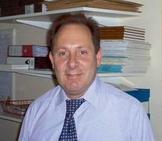Anestis Iossifidis
Consultant Orthopaedic Surgeon , Shoulder & Upper Limb Surgeon
Directory:
Tags:
Calcific tenonitis is the accumulation of calcium in the rotator cuff (calcific deposit). The actual cause of the build up of calcium is not known, but the condition is most common in people between 30 and 60. The calcium deposit can disappear of its own accord, but this might take a long time.
The build up of calcium in the tendon may result in increased pressure and a chemical irritation, which lead to pain that can be intense. The build up of calcium reduces the space between the rotator cuff and the acromion, which can result in sub acrominal infringement.
Directory:
Tags:
Tendonitis may only last for a few days, but it sometimes can last for weeks or months. Treatment options depend on which tendon you have injured and how badly it is damaged..
You may treat mild forms of tendonitis yourself by resting and supporting the affected area to reduce the inflammation and further damage. The resting time will depend on which tendon is affected and how severely it is damaged, but you might take between six and eight weeks to self repair.
Regularly applying ice to the affected area for 15 to 20 minutes at a time at regular intervals during the day can help to reduce pain and swelling, but remember to wrap the ice in a plastic bag or towel. If you apply ice directly to your skin you’ll get an ice burn.
Non-steroidal anti inflammatory medicines such as ibuprofen can help to reduce inflammation, but should not be used for long periods or if you suffer from asthma. Paracetamol can also help to reduce pain. More severe pain will require a prescription drug such as codeine.
Mild forms of tendonitis often respond well to physiotherapy, which helps to reduce pain, recover movement and function in the affected areas.
Corticosteroids that contain steroids, injected around the affected area into the tendon sheath may be used to reduce pain and inflammation. However, this is not a long tern solution and corticosteroids may thin and lighten the skin. In some cases of tendonitis local anaesthetic may be injected into the affected area.
If the condition is not responding to such treatment modalities extracorporeal shock wave therapy (ESWT) might be used to reduce pain. This modality passes shock waves through the affected area and is used in tennis elbow and Achilles tendonitis and may require one or two sessions and local anaesthetic.
Generally, tendonitis improves with time and may require a year for the symptoms to dissipate. Surgery may be required for some types of tendonitis.
Surgical techniques for, which have been used for tennis elbow include: (i) removing a damaged part of muscle from the elbow, (ii) removing part of an elbow ligament and (iii) damaging a nerve to eradicate pain. Following surgery, you should be able to start playing sport again within four to six months.
Arthroscopic – keyhole - surgery is generally used for calcific tendonitis. This only requires a small incision and it allows the surgeon to look inside your joint and remove the build up of any calcium deposits in the tendon in your shoulder.
An arthroscopy is a type of keyhole surgery that can be used to look inside a joint and repair any damage. Only a very small cut needs to be made in your body.
Directory:
Tags:
The shoulder is a complex joint, which has the facility for more motion than any other joint in the body. It’s comprised of the upper arm bone known as the humorus, the shoulder blade or the scapula and the collarbone, which is known also as the clavicle. Shoulder arthroscopy has been performed since the 1970s and is a minimally invasive surgical procedure undertaken by orthopaedic surgeons to inspect, diagnose and repair problems inside the joint.
The word arthroscopy is derived from two Greek words that mean, to look within the joint. A shoulder arthroscopic procedure involves making small incisions through which a small camera, known as an arthroscope, can be inserted into the shoulder joint. This relays pictures on a television screen, which enables the surgeon to guide small thin surgical instruments into the joint. Shoulder arthroscopy is usually a day surgery, less painful than open shoulder surgery and has a short recovery time.
The shoulder is one of the largest and most complex joints in the body. The shoulder joint is formed where the humerus (upper arm bone) fits into the scapula (shoulder blade), like a ball and socket.





